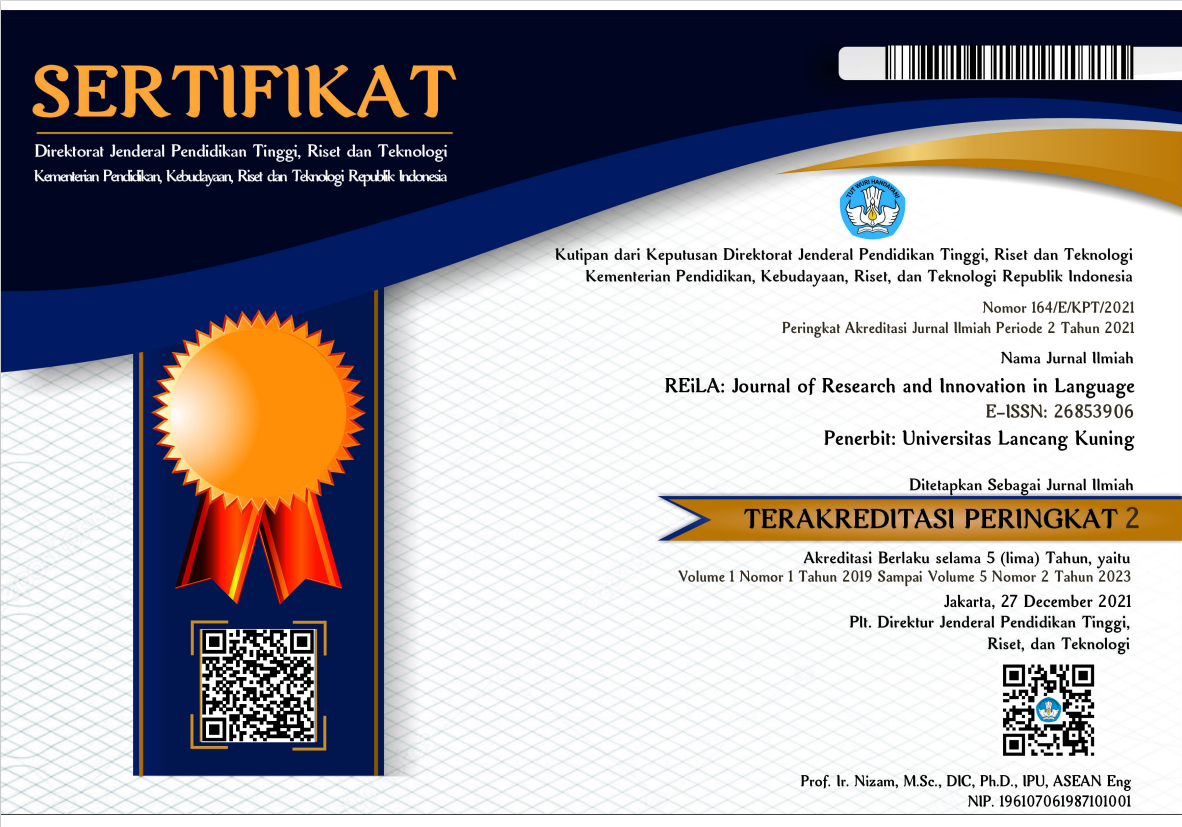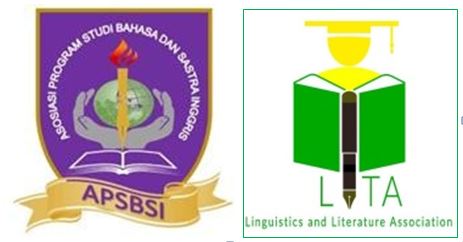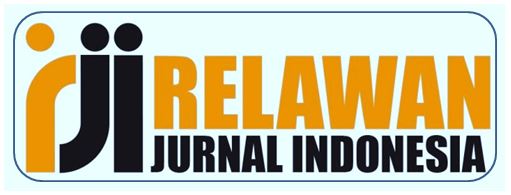Comparison of Indonesian and Japanese New-Vocabularies in the Context of the Covid-19 Pandemic: Morphosemantic Study
Abstract
Situational and social contexts influence language to change. Various online discourses during the current pandemic have given rise to new COVID-19 vocabulary in Indonesian and Japanese. Therefore, this study will examine and compare Indonesian and Japanese new vocabulary during the COVID-19 pandemic. This study used a morphosemantic theory in descriptive qualitative research. The data is a collection of new COVID-19 vocabulary from March 2020 to December 2021 from Indonesian and Japanese online newspapers. Listening and recording are used to collect data, and interactive model analysis is used to analyse it. Data collection found 24 new Indonesian words and 30 Japanese words. The two languages' vocabularies have 21 similar meanings. One Japanese word has no Indonesian equivalent. New Indonesian vocabularies form from adopted acronyms and loanwords. In Japanese, vocabulary comes from loanwords, native words, kango, and combinations. The new words regarding the COVID-19 outbreak are owned by both Indonesian and Japanese, but their comparison is not necessarily the same even though the context is the same. Both countries define or handle COVID-19 differently. Forming words from both languages affects the form of new vocabulary. According to the findings of this study, a global situation such as a pandemic affects various developments in vocabulary formation in Indonesian and Japanese. This study helps foreign language learners and researchers, especially Japanese, understand new newspaper vocabulary. It fills gaps left by previous research, which focused on single-language data and context. An analysis of COVID-19 vocabulary words in Indonesian and Japanese.
Downloads
References
Afria, R., & Magfiroh, A. (2021). Konstruksi afiks dalam kumpulan puisi “Buku latihan tidur” karya Joko Pinurbo. Titian: Jurnal Ilmu Humaniora, 5(2), 159-171. https://orcid.org/0000-0002-0188-1079
Agussyafrida, Arfanti, Y., & Sutikno. (2021). Dampak penggunaan bahasa Inggris terhadap penggunaan kalimat pada bahasa Indonesia. Jurnal Penelitian Pendidikan Bahasa Dan Sastra, 6(2). https://doi.org/https://doi.org/10.32696/jp2bs.v6i2.941
Barung, K. (2020). Keproduktifan afiks dalam proses morfologis bahasa Manggarai dialek umum. PROLITERA: Jurnal Penelitian Pendidikan, Bahasa, Sastra, Dan Budaya, 3(1). https://doi.org/https://doi.org/10.36928/jpro.v3i1.581
Cantrall, W. R. (1987). Introduction to the grammar of English. By Rodney Huddleston. New York: Cambridge University Press, 1984. xv + 483. Journal of English Linguistics, 20(2), 263–265. https://doi.org/10.1177/007542428702000211
Chaer, A. (2012). Linguistik Umum. Rineka Cipta.
Darlina, L., & Budiasa, I. M. (2015). Predikasi verba derivatif bahasa Jepang dan bahasa Indonesia (kajian tipologi linguistik). Soshum: Jurnal Sosial Dan Humaniora, 5(3). https://ojs.pnb.ac.id/index.php/SOSHUM/article/view/357
Darlina, L., & Dyah, W. (2017). Afiks verba derivatif bahasa Jepang (kajian tipologi linguistik). ASA, 4. https://journal.unesa.ac.id/index.php/asa/article/view/2476
Dewi, L. P. L. P., Indrawati, N. L. K. M., & Artawa, K. (2016). Types of word formations on Instagram hashtags. Humanis: Journal of Arts and Humanities, 16(2), 102–108. https://ojs.unud.ac.id/index.php/sastra/article/view/33436
Dinihari, Y. D. (2017). Kesalahan afiks dalam cerpen di tabloid gaul. DEIKSIS, 9(02), 273. https://doi.org/10.30998/deiksis.v9i02.1324
Felicia, F. (2016). Analisis makna kanyouku yang menggunakan kanji koshi dalam kodansha’s dictionary of basic Japanese idioms. Lingua Cultura, 7(1), 11-15. https://doi.org/10.21512/lc.v7i1.411
Gapur, A., & Pujiono, M. (2018). Konstruksi interogatif polar dalam bahasa Jepang. Ranah: Jurnal Kajian Bahasa, 7(1), 1. https://doi.org/10.26499/rnh.v7i1.477
Ghozali, D. D. (2021). Analisis morfo-semantik penggunaan leksem dalam instagram bahasa Arab. Kalamuna: Jurnal Pendidikan Bahasa Arab Dan Kebahasaaraban, 2(1), 63–79. https://doi.org/10.52593/klm.02.1.05
Gromenko, E. S. (2021). New compounds with Corona- and Covid in Russian language (word-formation and normative aspects). Russkaia Rech, 5, 40–54. https://doi.org/10.31857/S013161170017238-0
Hadi, S. (2017). Pembentukan kata dan istilah baru dalam bahasa Arab modern. Arabiyat : Jurnal Pendidikan Bahasa Arab Dan Kebahasaaraban, 4(2). https://doi.org/10.15408/a.v4i2.5801
Haryono, A. (2011). Perubahan dan perkembangan bahasa: Tinjauan historis dan sosiolinguistik. LINGUISTIKA, 18. https://ojs.unud.ac.id/index.php/linguistika/article/view/9679
Hermawan, A. P., Iryananda, F. R., & Visiaty, A. (2018). Analisis jenis wasei eigo di media sosial Twitter. Jurnal SORA, 3(1). http://jurnalsora.stba.ac.id/index.php/jurnal_sora/article/view/13
KEMENKOPMK. (2019). Pembatasan sosial berskala besar. kementerian koordinator bidang pembangunan manusia dan kebudayaan. https://www.kemenkopmk.go.id/pembatasan-sosial-berskala-besar
Kridalaksana, H. (1988). Beberapa prinsip perpaduan leksem dalam bahasa Indonesia. Kanisius.
Kridalaksana, H. (2009). Kamus linguistik (4th ed.). PT. Gramedia.
Mahsun. (2012). Metode penelitian bahasa (Cetakan Ke). PT Raja Grafindo Persada.
Maulana, D., & Sanusi, A. (2020). Analisis kesalahan morfosemantik pada teks terjemahan siswa Madrasah Aliyah Darussalam Bogor. Indonesian Language Education and Literature, 5(2), 137-146. https://doi.org/10.24235/ileal.v5i2.3837
Miles, M. B., Huberman, A. M., & Saldana, J. (2014). Qualitative data analysis: A methods sourcebook. SAGE Publications, Inc.
Nazira, M. (2018). Morfem bahasa Melayu Riau dialek Siak di desa Rempak kecamatan Sabak Auh kabupaten Siak provinsi Riau. GERAM, 6(1), 62-71.
O’Grady, W., & Archibald, J. (2016). Contemporary linguistic analysis: an introduction (Eighth edi). Pearson Canada.
Poedjosoedarmo, S. (2006). Perubahan tata bahasa: penyebab, proses, dan akibatnya. Universitas Sanata Dharma.
Prayoga, R. A., & Khatimah, H. (2019). Pola Pikir penggunaan bahasa Inggris pada masyarakat perkotaan di Jabodetabek. Simulacra: Jurnal Sosiologi, 2(1), 39-52. https://doi.org/10.21107/sml.v2i1.5520
Pujiono, M. (2017). Pemberdayaan bahasa indonesia dalam usaha pengurangan bentuk campur kode bahasa Jepang ke dalam bahasa Indonesia. Genta Bahtera, 3(1), 81–89.
Pujiono, M., Br. Barus, M., Nelvita, N., Nasution, V. A., & Erwani, I. (2021). Haji Bunka: A cultural approach to support social and physical distancing policies against the COVID-19 pandemic for students at the faculty of language and communication Universitas Harapan Medan. Jurnal Pengabdian Kepada Masyarakat (Indonesian Journal of Community Engagement), 7(4), 273-277. https://doi.org/10.22146/jpkm.61935
Rosliana, L. (2009). Proses pembentukan kosakata bahasa jepang (wago). LITE: Jurnal Bahasa, Sastra, Dan Budaya, 5(2), 145-152.. https://doi.org/https://doi.org/10.33633/lite.v5i2.1345
Rumilah, S., & Cahyani, I. (2020). Struktur bahasa; pembentukan kata dan morfem sebagai proses morfemis dan morfofonemik dalam bahasa Indonesia. Jurnal Pendidikan Bahasa Indonesia, 8(1), 70-87. https://doi.org/10.30659/j.8.1.70-87
Simpen, I. W. (2017). Dinamika pembentukan kata bahasa Indonesia. RETORIKA: Jurnal Ilmu Bahasa, 1(2), 319–330. https://doi.org/10.22225/jr.1.2.37.319-330
Simpen, I. W. (2021). Morfologi: Kajian proses pembentukan kata. Bumi Aksara.
Soidi, O. (2010). Perbandingan konstruksi frasa bahasa Jepang dan bahasa Indonesia serta implikasinya pada pengajaran dokkai dan hon’yaku. Jurnal Interlingua FBS Unima, 4. 127-146
Sudaryanto. (2015). Metode dan teknik analisis bahasa. Duta Wacana University.
Sutarini, S., Sutikno, S., & Wariyati, W. (2021). Analisis perkembangan kosakata bahasa Indonesia pada masa pandemi covid-19. TIN: Terapan Informatika Nusantara, 1(10), 499-502.
Sutedi, D. (2011). Dasar-Dasar Linguistik Bahasa Jepang. Humaniora Utama Press.
Syarifuddin, K. T., & Hafid, A. (2018). Pembentukan kosakata baru sebagai bentuk coinage dalam media sosial Instagram. Jurnal Kajian Bahasa, Sastra Dan Pengajaran (KIBASP), 2(1), 68–86. https://doi.org/10.31539/kibasp.v2i1.450
Takao, U. (2020). Konteks kemunculan kata-kata baru bahasa indonesia dan bahasa Jepang dalam situasi wabah COVID-19. Ayumi : Jurnal Budaya, Bahasa Dan Sastra, 7(2), 102-112. https://doi.org/10.25139/ayumi.v7i2.3248
Tsujimura, N. (2000). An introduction to Japanese linguistics. Blackwell Publishing.
Uhlenbeck, E. M. (1982). Kajian morfologi bahasa Jawa. Djambatan.
Verhaar, J. W. M. (2004). Asas-asas linguistik umum. Gadjah Mada University Press.
Waridah, E. (2013). EYD & seputar kebahasa-Indonesiaan. Ruang kata.
Yani, D. (2018). Proses pembentukkan gairaigo dalam buku teks minna no nihongo: kajian morfologi. Journal of Japanese Language Education and Linguistics, 2(2), 238-248. https://doi.org/10.18196/jjlel.2215
Yusuf, M., Purawinangun, I. A., & Anggraini, N. (2022). Analisis afiksasi pada teks eksposisi karangan siswa kelas 8 SMP Bina Mandiri Teluknaga (kajian morfologi). Lingua Rima: Jurnal Pendidikan Bahasa Dan Sastra Indonesia, 11(1), 149-163. https://doi.org/10.31000/lgrm.v11i1.5795










